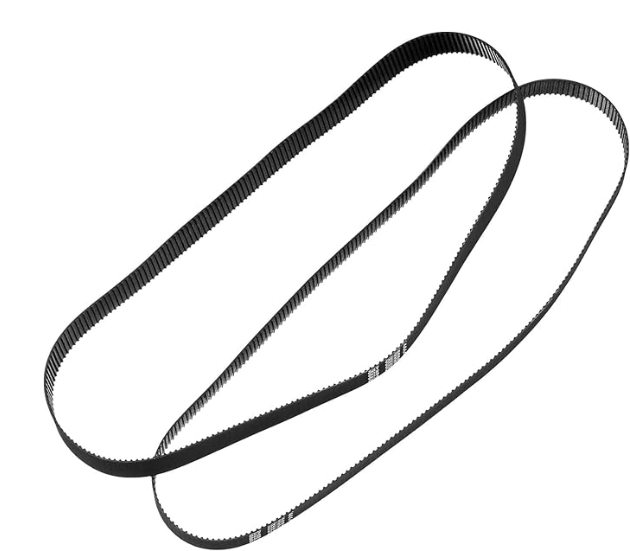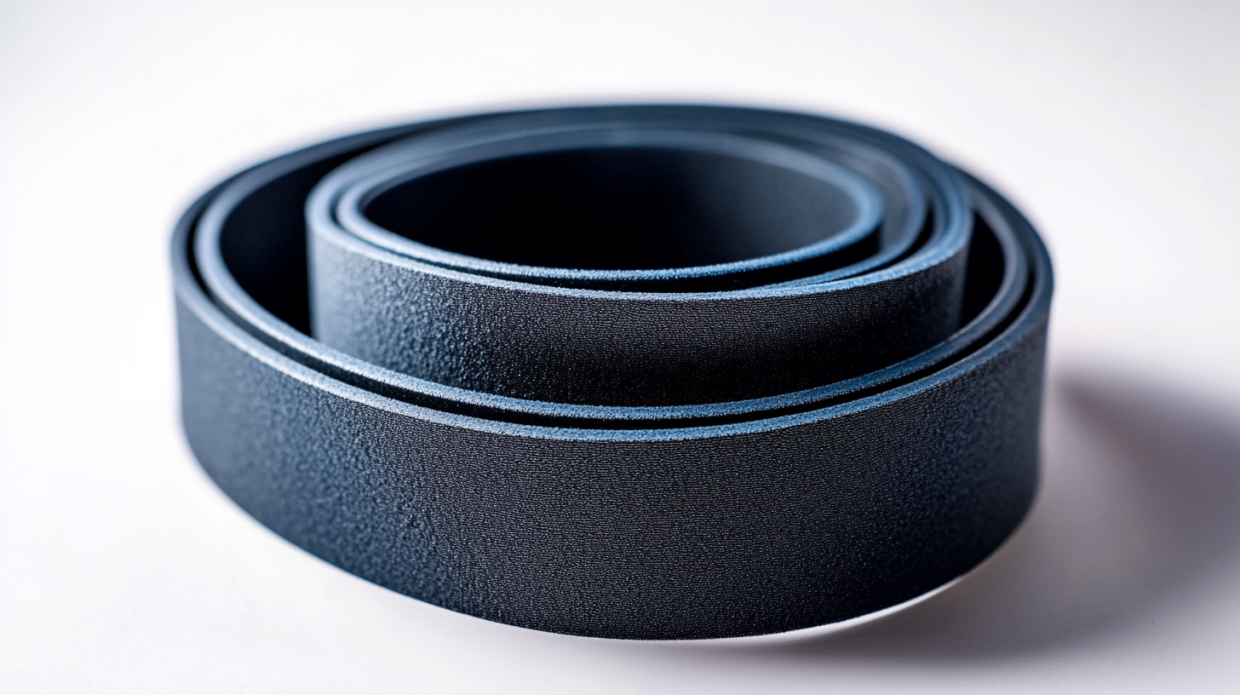
SANDER Drive Belt set of 2 Fits – Harbor FREIGHT 64530 VARIABLE SPEED 4 x 24 SANDER- High Strength Rubber Belt – Replacement Drive Belt – Made In The USA!- Toothed Drive Belt
- Thanks to fiber-rich compounding and outstanding consistency, each DNLK rubber bandsaw, sander, poly V, planer, sharpener, compressor belt and drill press replacement drive belt will outlast and out perform ordinary rubber drive belts.
Everything You Need to Know About Maintenance, Replacement, and Optimization
When it comes to power tools, the unsung heroes are often the smallest components. As any seasoned DIYer or professional woodworker knows, the drive belt is the literal connection between power and performance in your belt sander. Today, we’re diving deep into everything you need to know about the Bauer 64530 belt sander drive belt—that critical piece that keeps your projects moving forward.
Whether you’re facing an unexpected belt failure in the middle of a crucial project or simply planning ahead for routine maintenance, understanding this essential component will save you time, money, and countless headaches. Let’s get started with this comprehensive exploration of the Bauer 64530 drive belt.
What Exactly Is the Bauer 64530 Belt Sander Drive Belt?
The Bauer 64530 drive belt is a specialized rubber component designed specifically for the Bauer 3-inch by 21-inch belt sander. This isn’t just any ordinary belt—it’s engineered to transfer power from the motor to the sanding belt with optimal efficiency while withstanding the significant heat and friction generated during operation.
Made from high-quality rubber compounds reinforced with synthetic fibers, this drive belt features precisely calculated dimensions and elasticity to maintain proper tension throughout its service life. The unique composition allows it to grip firmly to the pulleys without slipping, ensuring consistent power transfer even under heavy loads.
What separates the Bauer 64530 from generic alternatives is its specific design parameters that match the exact specifications of the Bauer belt sander. The belt’s thickness, width, internal circumference, and elasticity are all calibrated to work harmoniously with the tool’s motor and pulley system.
The Anatomy of a Quality Drive Belt
To understand why the Bauer 64530 drive belt performs so well, it helps to understand its construction. A quality drive belt like the 64530 consists of several layers:
- An outer layer designed for optimal grip on the pulleys
- A reinforced core that provides strength and prevents stretching
- Heat-resistant compounds that prevent degradation during extended use
- Precision-molded contours that ensure proper tracking
The 64530 model has been rigorously tested to maintain consistent performance through hundreds of hours of operation. The belt’s design accommodates the specific motor specifications and pulley configurations found in the Bauer belt sander, making it an essential—rather than optional—replacement part when the time comes.
Signs Your Bauer 64530 Drive Belt Needs Replacement
No drive belt lasts forever. Even the highest quality components eventually show signs of wear. Here are the telltale indications that your Bauer 64530 drive belt is approaching the end of its service life:
Visual Indicators
Look for these physical signs during your routine inspection:
- Visible cracks along the belt’s surface
- Fraying edges or exposed internal fibers
- Glazed or shiny sections that indicate heat damage
- Noticeable stretching compared to a new belt
- Hardened or brittle sections that have lost elasticity
Performance Issues
Beyond the visual clues, your belt sander’s performance will also signal when the drive belt is failing:
- Inconsistent sanding speed that fluctuates under load
- Power loss or sudden stopping during operation
- Unusual noises like squealing or grinding
- Excessive vibration during operation
- The sanding belt stops while the motor continues running
Many users overlook these early warning signs, attributing them to other issues with the tool. However, addressing drive belt problems promptly can prevent more serious damage to your sander’s motor or bearings.
The Lifespan of the Bauer 64530 Drive Belt
One of the most common questions from Bauer belt sander owners concerns the expected lifespan of the drive belt. While there’s no single definitive answer, understanding the factors affecting belt longevity can help you plan maintenance schedules accordingly.
Under typical hobbyist use (occasional weekend projects), a Bauer 64530 drive belt commonly lasts between 18-24 months. For professional users operating the tool daily, the lifespan may range from 4-6 months depending on operating conditions.
Several factors significantly impact belt durability:
- Operating conditions: Dusty environments accelerate belt wear
- Material being sanded: Harder materials create more resistance and heat
- Continuous operation time: Longer sessions without cooling periods reduce belt life
- Proper tension adjustment: Over-tensioning dramatically shortens belt lifespan
- Storage conditions: Exposure to extreme temperatures, oils, or solvents degrades the rubber
Professional woodworkers often keep multiple replacement belts on hand, recognizing that this consumable component requires regular replacement—much like the sanding belts themselves, though with a longer interval.
Where to Purchase Replacement Bauer 64530 Drive Belts
When the inevitable replacement time arrives, knowing where to source authentic Bauer 64530 drive belts will save you considerable time and frustration. Here are the primary sources for genuine replacement parts:
Harbor Freight Stores
As the primary retailer for Bauer power tools, Harbor Freight stores nationwide typically stock the 64530 drive belt. These physical locations offer the advantage of immediate availability—perfect for when you need to complete a project without waiting for shipping.
Online Retailers
Several online options exist for purchasing Bauer replacement parts:
- Harbor Freight’s official website often carries the 64530 drive belt
- Amazon and other large online marketplaces frequently list both OEM and compatible alternatives
- Specialized power tool parts websites may offer bulk purchasing options
Independent Hardware Stores
Many local hardware stores and tool shops either stock Bauer components or can special order them for you. Building a relationship with these local retailers often provides the added benefit of professional advice and occasional discounts.
The Cost Factor: What You Should Expect to Pay
Price considerations are always important when maintaining your tools. The Bauer 64530 drive belt typically retails between $8-15 for a single genuine replacement part. While this may seem insignificant compared to the cost of the tool itself, these expenses accumulate over the sander’s lifetime.
Some considerations that affect pricing include:
- Genuine vs. compatible: OEM (Original Equipment Manufacturer) parts generally cost 15-25% more than compatible alternatives
- Bulk purchasing: Some retailers offer discounts when purchasing multiple belts simultaneously
- Shipping costs: When ordering online, shipping can sometimes exceed the cost of the belt itself
- Seasonal sales: Harbor Freight frequently runs promotions that may include discounted parts
For professional users, the economies of bulk purchasing often make sense. Keeping 3-5 replacement belts on hand ensures continuous operation without emergency sourcing delays.
The Replacement Process: Step-by-Step Guide
Replacing the drive belt on your Bauer 64530 belt sander is a straightforward process that requires minimal tools and mechanical expertise. Here’s a detailed walkthrough of the procedure:
Tools Required
Before beginning, gather these basic tools:
- Phillips screwdriver (medium size)
- Small flathead screwdriver
- Clean work surface
- Optional: needle-nose pliers
- Optional: work gloves
Safety Precautions
Safety should always come first when working with power tools:
- Ensure the tool is unplugged from power source
- Allow the sander to completely cool if recently used
- Work in a well-lit area
- Keep small parts organized to prevent loss
Step-by-Step Replacement Process
- Access the drive belt compartment
- Remove the four Phillips screws securing the belt cover
- Carefully lift off the cover, noting any dust or debris that may have accumulated
- Remove the old drive belt
- Identify the drive belt positioned between the motor pulley and the front roller
- Gently rotate the larger pulley while easing the old belt off
- Inspect pulleys for damage or excessive wear while the belt is removed
- Install the new Bauer 64530 drive belt
- Position the new belt around the smaller motor pulley first
- Stretch slightly to work it onto the larger pulley
- Rotate the system manually to ensure proper tracking
- Verify the belt sits properly in the pulley grooves
- Reassemble the sander
- Replace the belt cover, ensuring no wires are pinched
- Secure all screws, being careful not to overtighten
- Manually rotate the belt to ensure free movement
- Test operation
- Reconnect to power and test briefly
- Listen for unusual noises
- Verify smooth operation before returning to your project
The entire replacement process typically takes 10-15 minutes, even for those with minimal mechanical experience. The most common mistake is improper belt routing, so take a photo of the original configuration before removing the old belt if you’re uncertain.
Compatibility: Will Other Belts Work with the Bauer 64530?
Tool owners often wonder whether alternative belts can be used when original parts are unavailable. The Bauer 64530 belt sander uses a drive belt with specific dimensions and characteristics. While exact measurements may vary slightly between production runs, the typical specifications are:
- Length: Approximately 5 inches (internal circumference)
- Width: Roughly 3/8 inch
- Thickness: 1/8 inch
Some compatible alternatives include:
- Generic V-belts with similar dimensions (though these may lack the exact tensile properties)
- Drive belts from similar 3×21 belt sanders (though fitment cannot be guaranteed)
- Universal drive belts marketed as “3-inch belt sander replacement belts”
It’s important to note that while alternative belts may physically fit, they might not deliver the same performance or durability as the genuine Bauer component. Differences in material composition, tensile strength, and elasticity can affect both sanding performance and belt longevity.
Materials and Construction: What Makes a Quality Drive Belt
The material composition of the Bauer 64530 drive belt plays a crucial role in its performance and durability. Understanding these components helps appreciate why quality matters in this seemingly simple part.
The Bauer 64530 drive belt utilizes a synthetic rubber compound, typically neoprene or a similar elastomer, reinforced with polyester or aramid fibers. This composition provides:
- Excellent heat resistance up to approximately 180°F (82°C)
- Resistance to oil and many common workshop chemicals
- Balanced elasticity that maintains tension without excessive stretching
- Durability against continuous flexing
- Grip characteristics that prevent slippage under load
Lower-quality generic belts often use natural rubber compounds with minimal reinforcement, resulting in premature stretching, heat damage, and inconsistent performance. The additional cost of quality materials in genuine Bauer belts directly translates to extended service life and reliable operation.
Maintenance Tips: Extending Your Drive Belt’s Lifespan
Proper maintenance can significantly extend the service life of your Bauer 64530 drive belt. Implementing these practices will maximize your investment:
Regular Cleaning
Dust and debris accelerate belt wear through increased friction:
- Periodically blow out the belt compartment with compressed air
- Wipe pulleys clean with a dry cloth
- Remove any built-up residue that could affect belt tracking
Proper Storage
How you store your belt sander affects belt longevity:
- Store in a climate-controlled environment when possible
- Avoid extreme temperature fluctuations
- Position the tool to prevent pressure on the belt mechanism
- Keep away from solvents, oils, and fuels that degrade rubber
Operational Best Practices
How you use your sander directly impacts belt life:
- Allow appropriate cool-down periods during extended use
- Avoid applying excessive downward pressure while sanding
- Maintain proper tension—neither too tight nor too loose
- Clean filters regularly to prevent motor strain
- Start and stop the sander without material contact to reduce shock loading
By implementing these simple maintenance practices, many users report extending their belt life by 30-50% beyond the typical expectation.
Troubleshooting Common Drive Belt Issues
Even with proper maintenance, occasional issues may arise with your Bauer 64530 drive belt. Here are solutions to the most common problems:
Belt Slipping
If the belt slides rather than grips the pulleys:
- Verify proper belt installation and routing
- Check for glazed or hardened surfaces on the belt
- Ensure pulleys are clean and free of residue
- Confirm the belt is not stretched beyond usable limits
- Verify the motor mount is properly secured
Excessive Noise
Unusual sounds may indicate specific issues:
- Squealing often indicates improper tension or alignment
- Grinding may suggest pulley damage or misalignment
- Thumping typically indicates belt damage or foreign objects
- Rattling could mean loose hardware or motor mount issues
Inconsistent Speed
If sanding speed fluctuates unexpectedly:
- Check for belt slippage under load
- Inspect for partial belt damage
- Verify consistent power supply
- Examine motor brushes for wear (requires more advanced disassembly)
Belt Tracking Problems
If the drive belt doesn’t stay centered on pulleys:
- Verify pulley alignment
- Check for damaged or worn pulley edges
- Inspect the belt for uneven wear or deformation
- Confirm proper assembly of belt housing components
Most drive belt issues can be resolved through proper maintenance and timely replacement. However, persistent problems may indicate deeper issues with the belt sander that require professional service.
Warranty Considerations for the Bauer 64530 Drive Belt
Understanding warranty coverage for your Bauer belt sander and its components is essential for making informed maintenance decisions. The standard warranty policy typically includes:
- Belts and other wear items generally have limited coverage compared to the tool itself
- Most Bauer tools include a 90-day warranty on consumable parts like drive belts
- Proof of purchase is typically required for warranty claims
- Replacement parts usually carry their own warranty (often 30-90 days)
It’s worth noting that manufacturing defects typically present themselves early in the belt’s service life. A belt that fails prematurely (within the first few hours of operation) likely indicates a quality control issue rather than normal wear. In such cases, contacting the retailer or manufacturer promptly is advisable.
Extended warranty options are sometimes available at the time of tool purchase, though the value of these extensions specifically for wear items like drive belts is questionable given their relatively low replacement cost.
User Experiences: What Others Say About the Bauer 64530 Drive Belt
The experiences of other users provide valuable insight into the real-world performance of the Bauer 64530 drive belt. Based on numerous user reviews and forum discussions, several consensus points emerge:
Positive Feedback
Many users report:
- Consistent performance when properly installed
- Reasonable durability relative to cost
- Good availability compared to some competing brands
- Straightforward replacement process
- Reliable operation under typical DIY conditions
Critical Observations
Some users note these potential limitations:
- Reduced durability under extreme professional use
- Occasional quality variations between production batches
- Limited heat resistance during extended continuous operation
- Susceptibility to damage from improper storage
- Higher cost compared to generic alternatives (though often with better performance)
The majority of users report satisfactory experiences with the genuine Bauer 64530 drive belt, with most critical comments focused on premature wear in heavy professional applications rather than actual product failure.
Bulk Purchasing: Is It Worth Stocking Up?
For frequent users of the Bauer belt sander, purchasing drive belts in bulk often makes economic and practical sense. Consider these factors when deciding whether bulk purchasing is right for you:
Advantages of Bulk Purchasing
- Cost savings: Typical discounts range from 10-30% when purchasing 3+ belts simultaneously
- Convenience: Eliminating emergency sourcing when a belt fails
- Consistency: Getting matched belts from the same production batch
- Reduced shipping costs: Amortizing delivery fees across multiple items
Potential Drawbacks
- Shelf life concerns: Rubber compounds gradually degrade even in storage
- Capital investment: Higher initial outlay, though with long-term savings
- Storage requirements: Need for proper climate-controlled storage
- Risk of obsolescence: Possibility of model changes or upgrades
For professional users, keeping 3-5 replacement belts on hand typically offers the ideal balance between convenience and inventory management. Hobby users might find that keeping 1-2 spare belts is sufficient for their less frequent needs.
The DIY Alternative: Can You Make Your Own Drive Belt?
Some particularly resourceful tool owners inquire about creating their own replacement drive belts when original parts are unavailable. While technically possible, this approach has significant limitations:
Methods Sometimes Attempted
- Cutting custom belts from rubber sheeting
- Adapting O-rings or other rubber components
- Creating belts from adhesive-joined rubber strips
- Using automotive belt material cut to size
Practical Considerations
These DIY approaches face several challenges:
- Dimensional precision: Home methods rarely achieve the exact specifications needed
- Material limitations: Consumer-grade materials typically lack the necessary heat resistance
- Durability concerns: Homemade solutions generally fail much sooner than commercial belts
- Safety implications: Improper belts may break catastrophically during operation
- Cost-effectiveness: When factoring in materials and time, savings are often minimal
While emergency repairs might temporarily get a tool operational, the manufacturing precision required for optimal performance makes commercial replacement belts the most practical long-term solution for most users.
Conclusion: Keeping Your Bauer Belt Sander Running Smoothly
The Bauer 64530 drive belt may be a small component in your tool arsenal, but its impact on performance and productivity is significant. By understanding the nuances of selection, replacement, and maintenance, you can ensure your belt sander delivers consistent results throughout its service life.
Remember these key takeaways:
- Regular inspection prevents unexpected failures
- Proper installation ensures optimal performance
- Quality matters when selecting replacement belts
- Preventative maintenance extends service life
- Keeping spares on hand eliminates project delays
Whether you’re a dedicated hobbyist or a demanding professional, proper drive belt management directly translates to improved results and reduced downtime. By treating this seemingly minor component with appropriate attention, you’ll maximize your investment in the Bauer belt sander and elevate the quality of your woodworking projects for years to come.
Take the time to inspect your current drive belt today—it might be the difference between project success and frustrating delays in your next woodworking endeavor.

